According provided by lens YONGNUO 50mm 1: 1.8 (YN50mm F1.8N, for Nikon cameras) many thanks to Oleg Redkach.
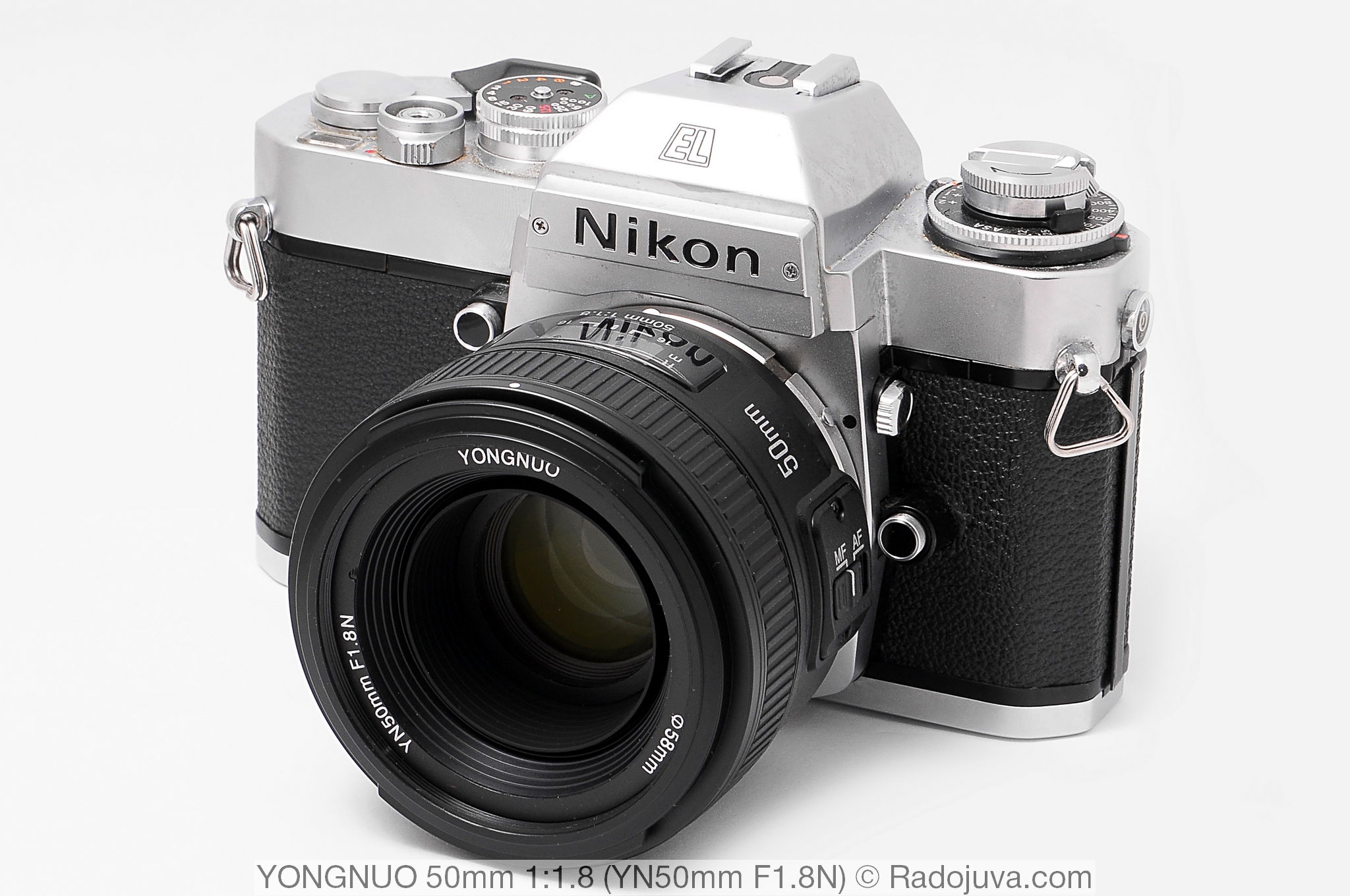
YONGNUO 50mm 1: 1.8 (YN50mm F1.8N). The lens is shown in film slr camera Nikon EL2. Enlarge Image.
Navigation
- Browse Navigation
- In short
- History
- All lenses and teleconverters Yongnuo
- Main Specifications
- Assembly
- Focusing
- Image quality
- Sample photos on Nikon D70
- Sample photos on Nikon D90
- Lens prices
- My experience
- Similar lenses from Nikon
- Differences from Nikon 50 / 1.8G
- Differences from Nikon 50 / 1.8D
- Video review
- Results
- User Comments
- Add your review or question on the lens
It's important: Please note that the models of the Yongnuo YN50mm F1.8 lens, in versions for Nikon and Canon, look very different from each other. Typically, third-party lenses, such as Tokina, Tamron, Sigma, Carl Zeiss, etc., have a very similar housing design for versions for different systems.
In short
Yongnuo 50mm 1: 1.8 (YN50mm F1.8N) - very cheap fast half a ruble from the Chinese manufacturer Yongnuo Digital. The lens copied the original housing design Nikon 50 / 1.8G and optical properties Yongnuo Lens EF 50mm 1: 1.8. In general, he is not bad... First of all, Yongnuo YN50mm F1.8N is interesting to owners motorless Nikon cameras... For those who have a Nikon camera with a built-in focus motor, there is a wonderful and inexpensive Nikon 50 / 1.8D (as well as a million of its subversions).
The creative and practical potential of such a fifty dollars is difficult to overestimate. It is suitable for a wide range of photo tasks. Photo enthusiasts often use it as a portrait lens. Many just want a fast fix, in addition to their whale lens. So, f / 1.8 aperture more than three feet wider aperture of f / 5.6, which is used in 'dark' kit lenses at the long end. In numerical terms, this means that Yongnuo 50mm 1: 1.8 (YN50mm F1.8N) is approximately 10 times brighterthan, for example, whale Nikon 18-55 / 3.5-5.6which uses a maximum relative aperture of only 50: 1 over a 5.6 mm focal length. The calculation of the difference in the relative aperture (count the aperture) is performed elementarily: 5.6 * 5.6: 1.8: 1.8 = 9.679, which is rounded to the value '10'.
History
The first lens from Yongnuo Digital is fifty dollars for Canon EOS cameras - Yongnuo Lens EF 50mm 1: 1.8 (YN50mm F1.8) introduced December 27, 2014.
July 10, 2015 in Shanghai was represented version Yongnuo AF-S 50mm 1: 1.8 (AF-S 50mm 1.8, for Nikon cameras). The lens was labeled 'AF-S' and the depth of field was F / 22. Near the thread for the light filter was the inscription 'YONGNUO AF-S 50mm 1.8', near the depth of field scale was the inscription 'AF-S 50mm 1: 1.8'.
On May 7, 2016, the 'YONGNUO Ø58mm YN50mm F1.8' lens went on sale (without the 'AF-S' lettering, without the 'N' lettering and with the depth of field scale for f / 16). Most likely Yongnuo AF-S 50mm 1: 1.8 was just a prototype, its optical design and type of focusing motor will remain unknown.
Some time later, the letter 'N' was added to the lens name - YONGNUO Ø58mm YN50mm F1.8N... 'N' is short for 'Nikon ', after which the lens took the form shown in this review.
On May 14, 2018, an updated version for Canon cameras was presented - Yongnuo Lens 50mm 1: 1.8 II (model YN50mm F1.8II). After 2 weeks, on May 30, 2018, a faster version for Canon cameras was announced - Yongnuo Lens 50mm 1: 1.4 (model YN50mm F1.4). August 18, 2018 was introduced YONGNUO YN50mm F1.4N E.
All Yongnuo Lenses
Bayonet mount Sony FE [DF, FULL FRAME] и Sony E[DA,APS-C]:
- yongnuo 11 mm 1:1.8 DA DSM WL S [announcement]
- yongnuo 16 mm 1:1.8 DA DSM S [announcement]
- yongnuo 35 mm 1: 2 DF DSM S [review]
- yongnuo 50 mm 1: 1.8 DF DSM S [announce]
- yongnuo 50 mm 1:1.8 DA DSM S [overview]
- yongnuo 85 mm 1: 1.8 DF DSM S [review]
- yongnuo 85 mm 1:1.8 DF DSM S II [announcement]
Bayonet mount Canon RF (mirrorless full frame):
- yongnuo 35 mm 1: 2 DF DSM R [review]
- yongnuo 35 mm 1:2 CR [announcement]
- yongnuo 50 mm 1:1.8 DF DSM R [to be announced]
- yongnuo 85 mm 1:1.8 DF DSM R (two subversions with different names) [review]
Bayonet mount Nikon Z [DF, FULL FRAME + DA,APS-C]::
- yongnuo 11 mm 1:1.8 DA DSM WL Z [announcement]
- yongnuo 35 mm 1:2 DF DSM Z [announcement]
- yongnuo 50 mm 1:1.8 DF DSM Z [announcement]
- yongnuo 50 mm 1:1.8 DA DSM Z [review]
- yongnuo 85 mm 1:1.8 DF DSM Z [announcement]
Bayonet mount fujifilm x [DA,APS-C]:
- yongnuo 11 mm 1:1.8 DA DSM WL X [announcement]
- yongnuo 50 mm 1:1.8 DA DSM X Pro [Announcement]
- yongnuo 50 mm 1:1.8 DA DSM X [announcement + overview]
For the system Micro 4 / 3:
- yongnuo 25 mm 1: 1.7 [review]
- yongnuo 42.5 mm 1: 1.7 [review]
- yongnuo 42.5 mm 1:1.7 II [overview]
- yongnuo 12-35 mm 1:2.8-4 STM ASPH MACRO [announcement]
Bayonet mount Nikon f (mirrored full frame):
- yongnuo 14 mm 1: 2.8 [overview]
- yongnuo 35 mm 1: 2 [overview]
- yongnuo 40 mm 1: 2.8 [overview]
- yongnuo 50 mm 1: 1.8 [review]
- yongnuo 50 mm 1: 1.4 E [overview]
- yongnuo 60 mm 1:2 MACRO MF [overview]
- yongnuo 85 mm 1: 1.8 [overview]
- yongnuo 100 mm 1: 2 [overview]
Bayonet mount Canon EF (mirrored full frame):
- yongnuo 14 mm 1:2.8 [review N]
- yongnuo 35 mm 1: 2 [review]
- yongnuo 35 mm 1: 1.4 [overview]
- yongnuo 35 mm 1: 1.4C DF UWM [announce]
- yongnuo 50 mm 1: 1.8 [overview]
- yongnuo 50 mm 1:1.8 II [overview]
- yongnuo 50 mm 1: 1.4 [overview]
- yongnuo 60 mm 1:2 MACRO MF [review N]
- yongnuo 85 mm 1: 1.8 [review]
- yongnuo 100 mm 1: 2 [overview]
Cameras:
- Yongnuo YN433 (2023, Micro 4/3, 20 MP, 4K)
- Yongnuo YN455 (2021, Micro 4/3, 20 MP, 4K)
- Yongnuo YN450/450M (2019, Micro 4/3 -> Canon EF, 16 MP, 4K)
Lenses and cameras and many other products from Yongnuo can easily be found at Authorized Yongnuo Dealer / Store on Aliexpres.
My video on all Yongnuo lenses here.
Yongnuo Digital lenses replicate the optical design of older Canon EOS lenses. Usually, a version for Canon comes out first, and after a while for Nikon. For other popular SLR systems (Pentax, Sony, Sigma, Micro 4/3), Yongnuo does not produce lenses. And Yongnuo Digital teleconverters exist, at the moment, and at all only for Canon EOS cameras.
Main technical characteristics of YONGNUO 50mm 1: 1.8 (YN50mm F1.8N):
| Review Instance Name | Near the front lens: YONGNUO Ø58mm YN50mm F1.8N. On the case: 50mm 1: 1.8 SN0011346. On the box: YONGNUO DIGITAL YN50mm F1.8N standart prime lens |
| Basic properties |
|
| Front Filter Diameter | 58 mm, plastic thread for filters |
| Focal length | 50 mm, EGF for Nikon DX cameras is 75 mm |
| Zoom ratio | 1 X (this is a fixed lens, it does not have a zoom) |
| Designed by | for full and cropped Nikon digital cameras |
| Number of aperture blades | 7 rounded petals |
| Tags | focusing distance in meters and feet, depth of field for F / 16, mark of bayonet mount and hood mount |
| Diaphragm | from F / 1.8 to F / 16, without aperture ring, lens analog Nikon G. |
| MDF | 0.45 m, maximum magnification ratio 1: 6.7 |
| The weight | 203 g
(since about 2018, the weight of some lenses is 177 grams) |
| Optical design | 6 elements in 5 groups. The lens does not use special optical elements in its optical design.
The optical design is identical to the lens. YONGNUO LENS EF 50mm 1: 1.8. Also, a similar optical scheme is used by lenses:
Optical design like a double lens of Gaus (i.e. this is Planar). |
| Lens hood | Plastic, bayonet type. The model is unknown. It can be supplied. |
| Manufacturer country | The country of manufacture is not indicated on the lens case. But, in fact, the lens is made in China. |
| Period | Available May 7, 2016. Prototype shown July 10, 2015. |
| Instructions | View my scan (English only) |
| Price | View on Aliexpress from a trusted seller |
For some reason, on the network, I met very little information directly about the fifty dollars from Yongnuo for Nikon cameras, because in this review I tried to add as much useful information as possible on the YN50mm F1.8N.
Assembly
The lens came to me for review almost new. Before sending it for review, the owner used it for only a few days.
In a small box is a warranty card, instructions in Chinese and English, and the lens itself with a front (YN-58) and a back cover. The box is made in the colors typical of the golden boxes of Nikon Nikkor lenses. What the copy from this review did not have was a protective film on the front and rear lenses, which originally comes with the lens.
The lens is well assembled. It's nice that, unlike the version Yongnuo Lens EF 50mm 1: 1.8The Yongnuo YN50mm F1.8N version has a metal mount mount. The focus ring is rubberized. It is stated that the contacts of the microcircuits are gold-plated to improve the passage of current.
Of the shortcomings I want to highlight:
- The focus ring has a slight backlash.
- If you press the diaphragm lead (the tab for controlling the diaphragm) from the bayonet side, it will be noticeable that the aperture blades not only close / open but also move back and forth towards the front or rear lens. In other lenses, I did not observe such a looseness of the aperture mechanism. I can’t tell how critical this behavior of the diaphragm mechanism is. During real photography, I did not have any problems with the aperture. True, there are rumors in the network that the diaphragm mechanism is a weak link in this lens.
- Yongnuo YN50mm F1.8N weighs 20 grams heavier than the original Nikon 50 / 1.8G, from which the case design was copied (185 vs 203 grams). However, in my hands I got another new Yongnuo YN50mm F1.8N, made at the end of 2018 and its weight is 177 grams.
- Also, it's a pity that I didn't find a hood in the package. At the same time, some Yongnuo YN50mm F1.8N lenses come with a plastic bayonet type hood. It is not known why not all YN50mm F1.8N lenses are equipped with a hood.
- Several times during high-speed continuous shooting, the camera lost contact with the lens. To restore performance, it was necessary to disconnect the lens and reinstall it on the camera. This situation occurred several times on different cameras, which indicates a problem with the lens, not the camera.
- Unlike Nikon 50 / 1.8GThe Yongnuo YN50mm F1.8N is not dust- and waterproof rubber lens mount seal.
- There is no inscription about the country of manufacture on the lens case. Of course, we all know very well that the lens is made in China, but still the lack of information on the product itself only adds to the alarm.
The diameter of the front filter is 58 mm, the same diameter uses Nikon 50 / 1.8G and many other lenses.
I want to note that the Yongnuo YN50mm F1.8N (for Nikon cameras) is better made than Yongnuo Lens EF 50mm 1: 1.8 (for Canon cameras). Unlike the version for Canon cameras, it uses a metal lens mount, virtually internal focusing, has a window with a focusing distance, the depth of field scale, a more elaborate AF / MF switch and can use a bayonet type hood.
UPDATE 1: With some cameras and some instances of the Yongnuo YN50mm F1.8N, the access to the memory card indicator blinks when turned off. Most likely the camera constantly 'disconnects / connects' the lens. The exact cause is unknown.
UPDATE 2: With some cameras, the battery power decreases when turned off.
Focusing
The lens has built-in focus motor DC-type (DDirectly Current Motor- ordinary DC motor). To be precise, the Yongnuo YN50mm F1.8N is an analog of the Nikon series lenses AF-I. Unlike lenses Nikon AF-Sthat use ultrasonic focusing motors Nikon SWMold lenses Nikon AF-I use a built-in buzzing micro focus motor similar to the Yongnuo DC.
The lens will automatically focus on all Nikon DSLR cameraseven on amateur series models Nikon DXthat do not have a built-in focus motor: D40, D40x, D60, D3000, D3100, D3200, D3300, D3400, D3500, D5000, D5100, D5200, D5300, D5500, D5600as well as mirrorless cameras Nikon Z with adapter FTZ / FTZ II.
When focusing the motor is noisy. Strange, but the noise level is much lower than the lens Yongnuo Lens EF 50mm 1: 1.8. It is very good that the Yongnuo YN50mm F1.8N noise is less than non-motor Nikon 50 / 1.8D. Sorry, but low noise from the ultrasonic motor Nikon 50 / 1.8G he does not compare.
Auto focusing on the lens is enough fast. Auto focus speed comparable to Nikon 50 / 1.8G.
When used on a camera Nikon D90 (with unpretentious Multi-CAM 1000 focusing system), as well as on the camera Nikon D70 (with super-simple Multi-CAM 900 focusing system), the lens behaves well, rarely focuses incorrectly. I had no problems with focus accuracy and focus. I was pleasantly surprised by the quality of the focus. On camera Nikon D90 I checked the presence of the back and focus front at different focusing distances (infinity and MDF as well). Pictures taken using the Live View mode (which does not suffer from back / front focus) were used as a measure. Focusing accuracy using phase sensors completely coincided with the Live View mode.
I have a lot of experience with the lens Nikon 50 / 1.8D. I want to note that, nevertheless, the Yongnuo YN50mm F1.8N focuses in the general case not as confidently as the original lens.
When focusing, the front lens group moves in the middle of the frame of the housing. I can’t say that the lens has internal focus. But when focusing the lens does not change its size, and the filter is wound on a fixed outer part of the frame of the housing. This type of focusing can also be found in Nikon 50 / 1.8G и Nikon 50 / 1.4G.
The focus ring is rubberized and rotates approximately 80 degrees. When extreme positions are reached, the ring abuts. The focus distance scale rotates in the opposite direction to the rotation of the focus ring (I see this for the first time!). Manual aiming is not very convenient. During manual focusing, you can hear 'plastic rubbing against plastic'.
The lens barrel has an 'AF / MF' (auto focus / manual focus) focus mode switch. During autofocus, the focus ring remains stationary and can be freely rotated 360 degrees without affecting focus.
The lens has a window with a focus distance scale in meters and feet, as well as a depth of field scale for F / 16. The minimum focusing distance is 45 cm, and the maximum magnification ratio is 1: 6.7 (typical for similar fifty dollars).
Other features:
- Yongnuo YN50mm F1.8N has no focus problems in Live View (tested on Nikon D90).
- The lens transmits the focus distance to the subject in the camera (analog Nikon D, Nikon G).
- Yongnuo YN50mm F1.8N has a slightly pronounced 'Focus Breathing' effect (changing the viewing angle during focusing). During focusing towards the MDF, the viewing angle decreases.
- The viewing angle of the Yongnuo YN50mm F1.8N is slightly wider than that of Nikon 50 / 1.8D. It may seem that the focal length of the Yongnuo YN50mm F1.8N is closer to 45 mm.
- Focusing is performed by simultaneously moving the entire lens block (all lenses) relative to the focal plane.
- Yongnuo YN50mm F1.8N does not have a hard stop (hard infinity mechanical stop) which allows you to accurately and quickly focus the lens at infinity under any external temperature conditions. For accurate aiming at infinity, you cannot just bring the focus ring to its extreme position.
- Important: YN50mm F1.8N has a small focus-shift (shift-focus). During aperture, the exact focus moves away from the lens. The level of shift is the same as that of Nikon 50 / 1.8D.
- Important: Yongnuo YN50mm F1.8N is a third-party lens. It may happen that it will not work correctly with the new Nikon cameras, which will be presented after the announcement of this lens. Details on this issue are considered by me. here.
- Important: I have already met on the net that the Yongnuo YN50mm F1.8N does not automatically focus with some Nikon cameras. And also I met information that the Yongnuo YN50mm F1.8N may suffer from a strong twitching of focus. Obvious problems are observed with the model Nikon D300s.
- Important: this instance suffers from front focus on the camera Nikon D40, which is used by the owner of this lens (according to the owner).
- Unknown compatibility with teleconverters.
- Unknown compatibility with adapter FT-1 for Nikon 1 system cameras.
To summarize, then the lens is focused with focusand the clever design of the housing and 'AF / MF' switch make the YN50mm F1.8N more convenient to use than Nikon 50 / 1.8D.
Image quality
The color rendering is pleasant, in some ways even better than the original Nikon 50 / 1.8D. Also, I want to note that enlightenment in versions Yongnuo Lens EF 50mm 1: 1.8 and Yongnuo 50mm 1: 1.8 (YN50mm F1.8N) visually very different. Most likely the version for Nikon uses updated enlightenment.
Chromatic aberration was not without. Friging (green and purple contours of contrasting objects in the blur zone, example).
In the center of the frame, the lens is sharp enough already at F / 1.8. Confident sharpness in the center of the frame comes with F / 2.2-F / 2.5. At f / 2.8 aperture, the lens in the center of the frame is very good. On full-format cameras, there will most likely be a noticeable subsidence of sharpness at the corners and edges of the image.
The vignetting level on APS-C cameras is low even at F / 1.8. I did not have a 58 mm filter on hand to check how much it could affect vignetting.
The level of distortion is small.
The lens well tolerates back and side light. The deep-set front lens contributes to this. The frame of the case works like a small hood. In rare cases, you can get a slight rainbow stratification of the rays and small glare. With an optional bayonet hood installed, backlit and side-light operation should improve. From bright objects to achieve the effect of a 14-ray star pretty hard. Due to the rounded petals, the effect occurs only on strongly covered diaphragms (example), while the formed star is not very beautiful and poorly expressed.
I want to separately highlight in bold, which is optically YN50mm F1.8N no worse than the original Nikon 50 / 1.8D. Laboratory tests may even show the superiority of the YN50mm F1.8N. True, modern Nikon cameras can automatically correct some flaws. Nikon 50 / 1.8Dsuch as vignetting, distortion, chromatic aberration etc., in the case of the YN50mm F1.8N, third-party software (or not) must be used to remove distortion.
On open apertures, the bokeh of the lens is no different Nikon 50 / 1.8D и Canon 50 / 1.8 II. The reason for this the same similar optical design. Below is a GIF animation of the optical circuit for six of these lenses:
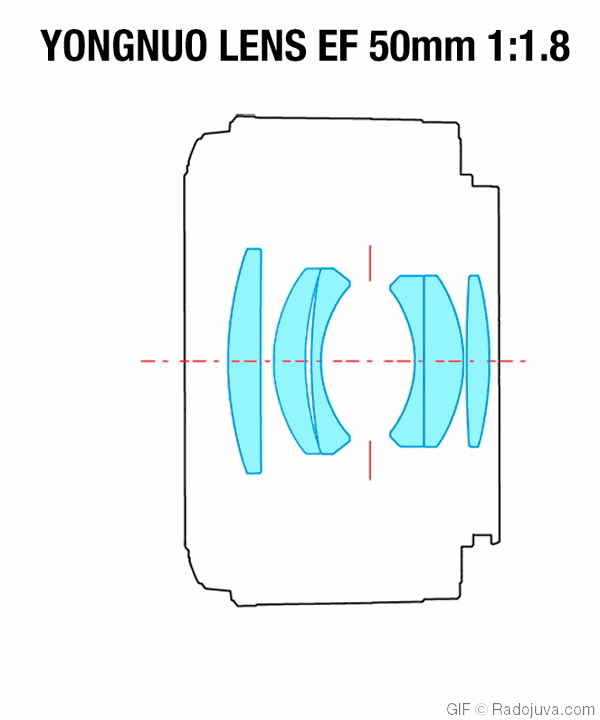
Optical schemes of lenses: YONGNUO LENS EF 50mm 1: 1.8, Yongnuo YN50mm F1.8N (from review), Canon Lens EF 50mm 1: 1.8, Canon Lens EF 50mm 1: 1.8 II, Canon Lens EF 50mm 1: 18 STM, Nikon 50mm 1: 1.8D AF Nikkor
Sample photos on Nikon D70
Pictures from Nikon D70. Photos are shown without processing, on-camera JPEG. You can see the bokeh of the lens.
You can download the source files at this link (56 JPEG files).
Sample photos on Nikon D90
Pictures from Nikon D90. The photos in the gallery are shown without processing, the conversion of the source RAW files by the original Nikon ViewNX-i utility without any additional adjustments.
You can download the source files at this link (70 RAW files).
Sample photos in processing
Several photos in processing can be viewed at 500px: 1, 2, etc.
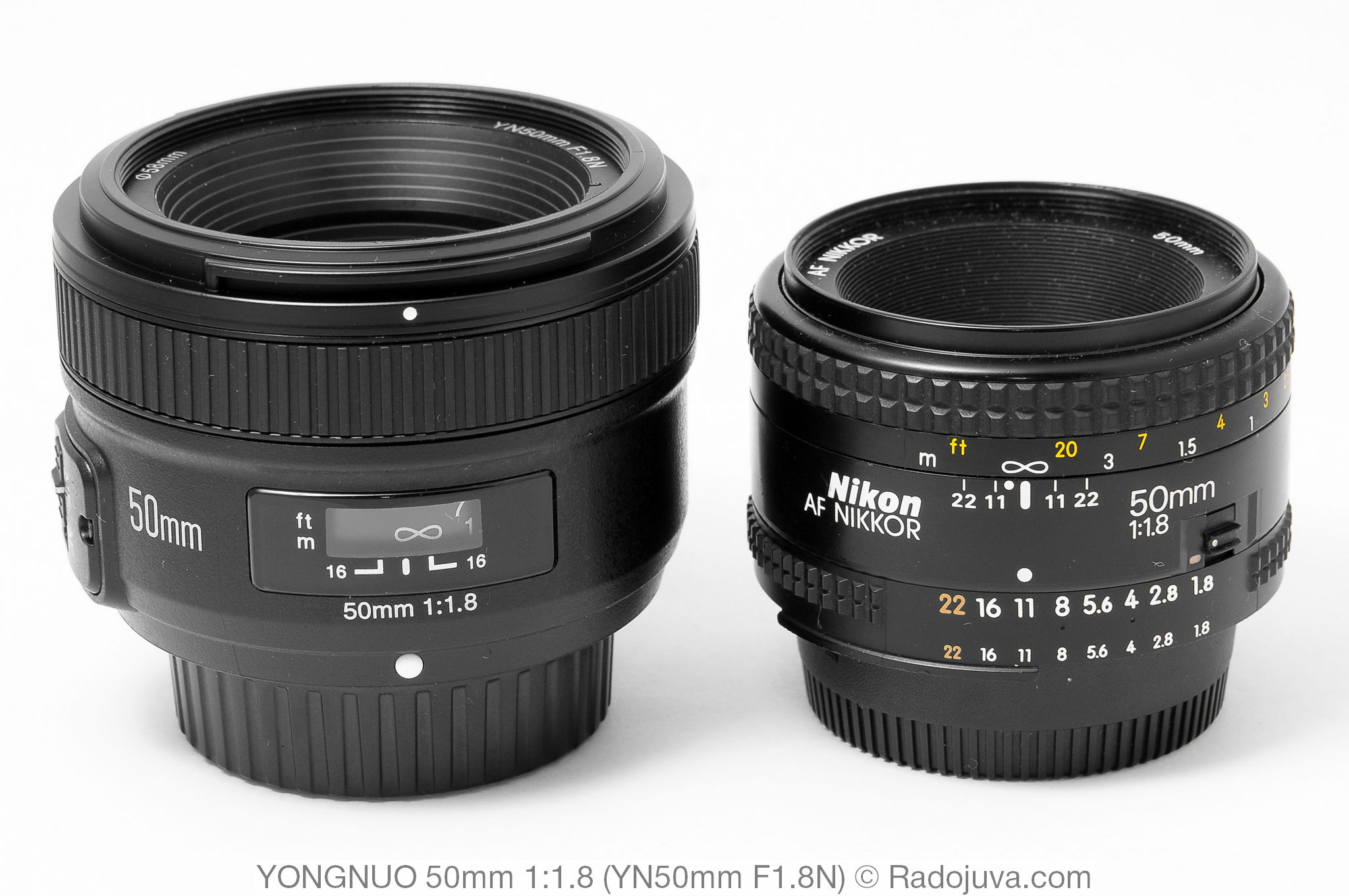
The sizes of the lenses are Yongnuo 50mm 1: 1.8 (YN50mm F1.8N) and Nikon AF Nikkor 50mm 1: 1.8 (MKII, NJ, NIKON JAPAN version)
Prices
Prices for Yongnuo 50mm 1: 1.8 lens (YN50mm F1.8N) at aliexpress.com can see and buy at this link. On aliexpress.com this lens is sold at the cheapest prices. In all other places, for example, in local stores of the former CIS countries, Yongnuo 50mm 1: 1.8 is much more expensive.
Comments on this post do not require registration. Anyone can leave a comment. Many different photographic equipment can be found on AliExpress.
My experience
A cheap fifty for Nikon non-motorized cameras is very good. Motorized camera owners could always afford to buy a pretty one Nikon 50 / 1.8D for only 90-110 dollars. But for owners of non-motorized cameras had to buy a more expensive Nikon 50 / 1.8G (170-200 dollars). With the advent of Yongnuo 50mm 1: 1.8, you can afford a brand new fifty dollars with an integrated focus motor for $ 80.
I relate to the YN50mm F1.8N quite warmly and am glad that amateurs have the opportunity to cheaply buy a high-aperture fifty. I'm also glad that the YN50mm F1.8N turned out to be better overall than Yongnuo Lens EF 50mm 1: 1.8. It’s only a pity that the Nikon version costs half the price of the Canon version.
Important: This lens is primarily intended for amateur photographers (not professionals or advanced amateurs!) who will be careful about their photo equipment and not use it in conditions with a heavy load (weddings, reports, extreme conditions, etc.). I saw with my own eyes how my colleague, during a lens change, dropped Nikon 50 / 1.8D from a meter height onto a concrete floor. The lens received only a tiny scratch on the body, but this did not affect its functionality. I don't think the Yongnuo 50mm 1: 1.8 will stand up to this test.
Of course, the stress resistance of Yongnuo 50mm 1: 1.8 is not comparable to the old manual lenses Nippon Kogaku Japan Nikkor-S Auto 1: 2 f = 5cm or Nikon Nikkor-SC Auto 1: 1.4 f = 50mm, or MS Helios-81H 2/50... However, for most tasks, I would have preferred the presence of autofocus in front of a sturdy, quality body. Users who are looking towards the YN50mm F1.8N are often strapped for funds and faced with a choice: 'This Chinese' or 'Japanese manual'? In personal messages I am very often asked this question. Usually I give the answer that for photography in general it is better to "Chinese", and for video shooting (where automatic focus is not so important) - any "Japanese manual".
If to summarize completely all my experience with the lens, here is my brief recommendation: YN50mm F1.8N can be safely bought for Nikon non-motorized cameras (exact list here) For cameras with built-in focus motor (exact list here) it is better to take the original Nikon 50 / 1.8D (does not matter, used or new).
All Nikon 50 / 1.8 Autofocus Lenses
- Nikon 50mm 1: 1.8 AF Nikkor (first version, MKI) - the lens was produced only in Japan from 1986 to 1990. It is easy to distinguish by a window with a focusing distance and a narrow plastic focus ring. There are two subversions that are no different:
- MKI first subversion. Weighing 210 grams. It is easy to distinguish by the screw under the inscription '1: 1.8'. From September 1986 to March 1987. Serial numbers start at 2
- MKI second version. Weighing 165 grams. It is easy to distinguish by the absence of a screw under the inscription '1: 1.8'. From 1987 to 1990. Serial numbers start at 3.
- Nikon 50mm 1: 1.8 AF Nikkor (second version, MKII, also known as the 'N', or the 'NEW' version) - the lens was produced in Japan and China. The MK II version was produced from 1990 to 2001. There are three subversions that are no different:
- Nikon 50mm 1: 1.8D AF Nikkor (third version, MKIIIbetter known as 'D'-version) - the lens is available from 2002 to this day. All lenses are made in China.
- Nikon AF-S Nikkor 50mm 1: 1.8G SWM Aspherical (fourth version, MKIVbetter known as '1.8 G'-version or '1.8 AF-S' version) - the lens has been produced since 2011, all lenses are made in China.
- Nikon AF-S Nikkor 50mm 1: 1.8G SWM Aspherical Special Edition (fifth version, MKVbetter known as version 'Special Edition' or 'SE' or version for the camera with a retro design of the case Nikon Df) - the lens has been available since the fall of 2013. All lenses are made in China.
- Nikon Nikkor Z 50mm 1: 1.8 S, from summer 2018, lens for mirrorless cameras with Nikon Z mount... Diagram of 12 elements in 9 groups, 2 ED, 2 ASP.
Details on the lineup of fifty dollars from Nikon can be found in my article 'All Nikon autofocus fifty dollars'.
I want to note that the MKI, MKII, MKII versions use the same 6/5 optical circuitry, similar to the YN50mm F1.8N.
Versions MKIV, MKV use the updated optical scheme 7/6.
Differences from Nikon 50 / 1.8G
The main differences between Yongnuo 50mm 1: 1.8 (YN50mm F1.8N) and Nikon AF-S Nikkor 50mm 1: 1.8G SWM Aspherical:
- YN50mm F1.8N is a newer lens introduced 5 years after the release Nikon 50 / 1.8G.
- YN50mm F1.8N is 18 grams heavier Nikon 50 / 1.8G. The YN50mm F1.8N does not come with an integrated hood.
- У Nikon 50 / 1.8G Yes rubber lens mount sealwhich makes the mount mounts dustproof and waterproof.
- Lenses use different focus motors. YN50mm F1.8N uses a conventional micro motor, Nikon 50 / 1.8G uses a Nikon SWM ultrasonic motor. The focusing speed is practically the same.
- Nikon 50 / 1.8G has the ability to constantly manually control the focusM / A'. For manual focusing, YN50mm F1.8N must be set to the 'MF' position.
- Different optical schemes. Nikon 50 / 1.8G uses a more modern optical scheme, including one aspherical element, which allows to achieve better image, especially on open diaphragms.
- Modern Nikon cameras can automatically correct some lens distortion Nikon 50 / 1.8G. With the YN50mm F1.8N, some image enhancement functions will not be available, since this lens is not in the memory of modern cameras.
- Cost of new Nikon 50 / 1.8G about 2-3 times the cost of the new YN50mm F1.8N.
Differences from Nikon 50 / 1.8D
The main differences between Yongnuo 50mm 1: 1.8 (YN50mm F1.8N) and Nikon 50mm 1: 1.8D AF Nikkor:
- YN50mm F1.8N is a newer lens introduced 14 years after the release Nikon 50 / 1.8D.
- Lenses use a completely different body design. Visually Nikon 50 / 1.8D much smaller YN50mm F1.8N.
- Nikon 50 / 1.8D about 50 grams lighter than the YN50mm F1.8N.
- The YN50mm F1.8N uses a built-in micro focus motor to focus. Nikon 50 / 1.8D It does not have a built-in focus motor and focuses due to the focus motor built into the camera. This is one of the main functional differences between the lenses.
- Unlike Nikon 50 / 1.8D, during focusing, the YN50mm F1.8N does not have a barrel extension.
- Modern Nikon cameras can automatically correct some lens distortion Nikon 50 / 1.8D. With the YN50mm F1.8N, some image enhancement functions will not be available, since this lens is not in the memory of modern cameras.
- Nikon 50 / 1.8D It has an aperture control ring that the YN50mm F1.8N does not have.
- New Nikon 50 / 1.8D It costs a bit more than the new YN50mm F1.8N.
To summarize, it turns out that the Yongnuo 50mm 1: 1.8 mixture Nikon 50 / 1.8D и Nikon 50 / 1.8G. From Nikon 50 / 1.8G he took control and body design, and from Nikon 50 / 1.8D took the optical circuit. Functionally, Yongnuo 50mm 1: 1.8 is still closer to Nikon 50 / 1.8G.
Video review
A brief video review can be viewed on my Youtube channeleither here:
Results
Yongnuo 50mm 1:1.8 (YN50mm F1.8N) – cheap analog Nikon 50 / 1.8G (only about 100 dollars from this link) is optically close to Nikon 50 / 1.8D. No matter how strange it sounds, the YN50mm F1.8N is a perfectly suitable lens. Given the price / performance ratio, I recommend it to all amateur photographers who want to join the world of fast auto focus lenses.
UPDATE: review appeared Yongnuo 35mm 1: 2 (model YN35mm F2N).
Material prepared Arkady Shapoval. Training/Consultations | Youtube | Facebook | Instagram | Twitter | Telegram

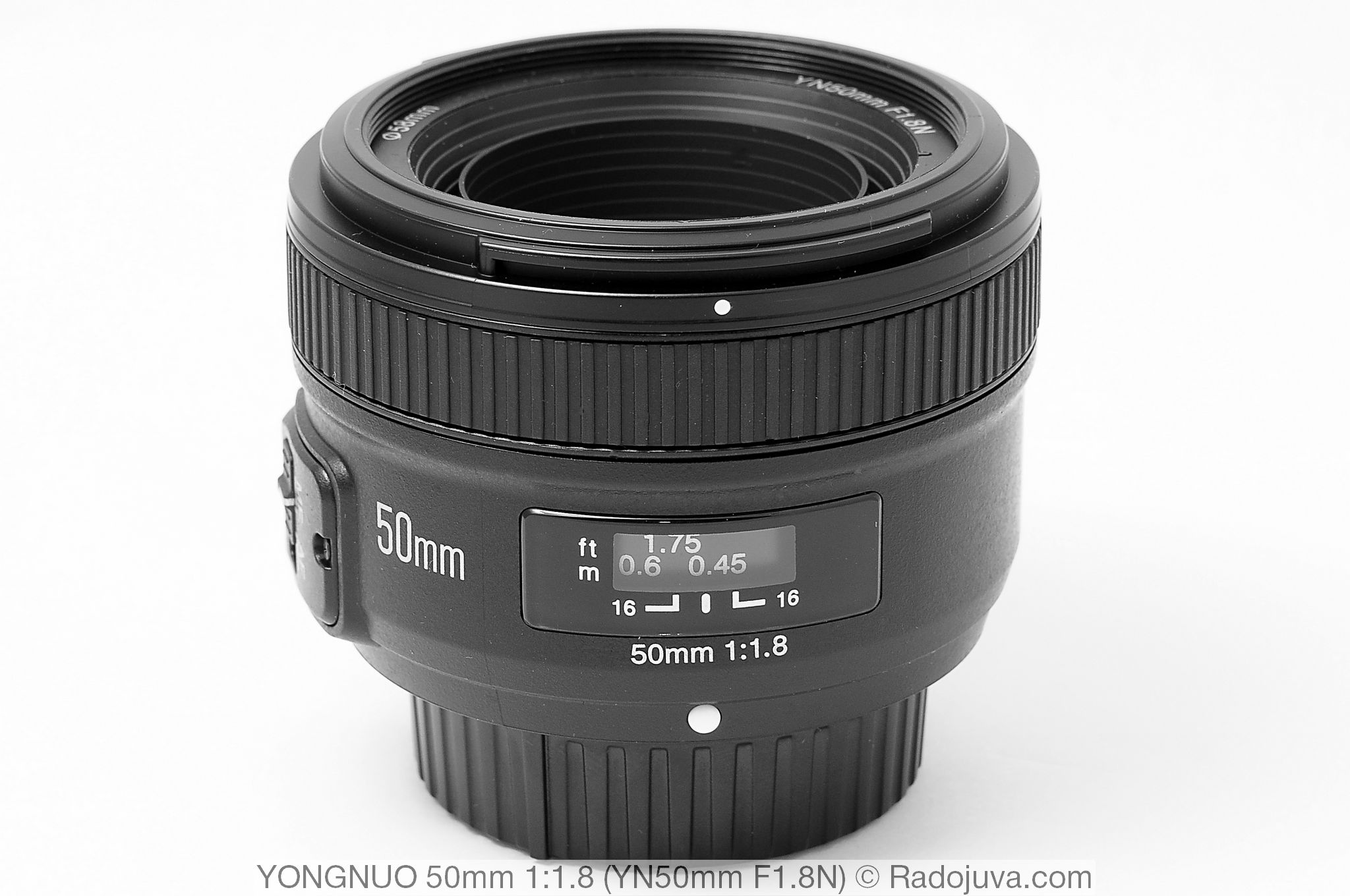
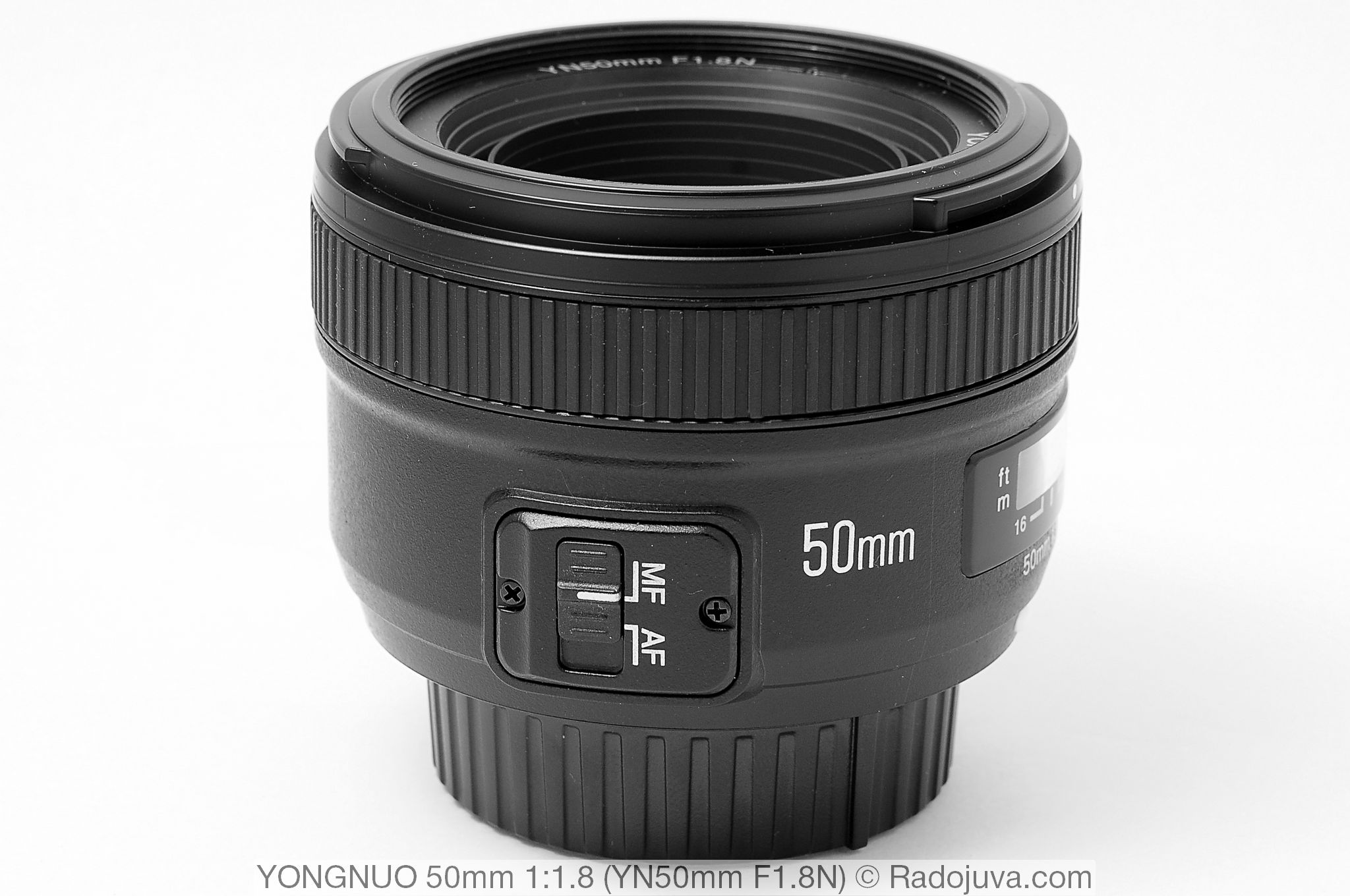
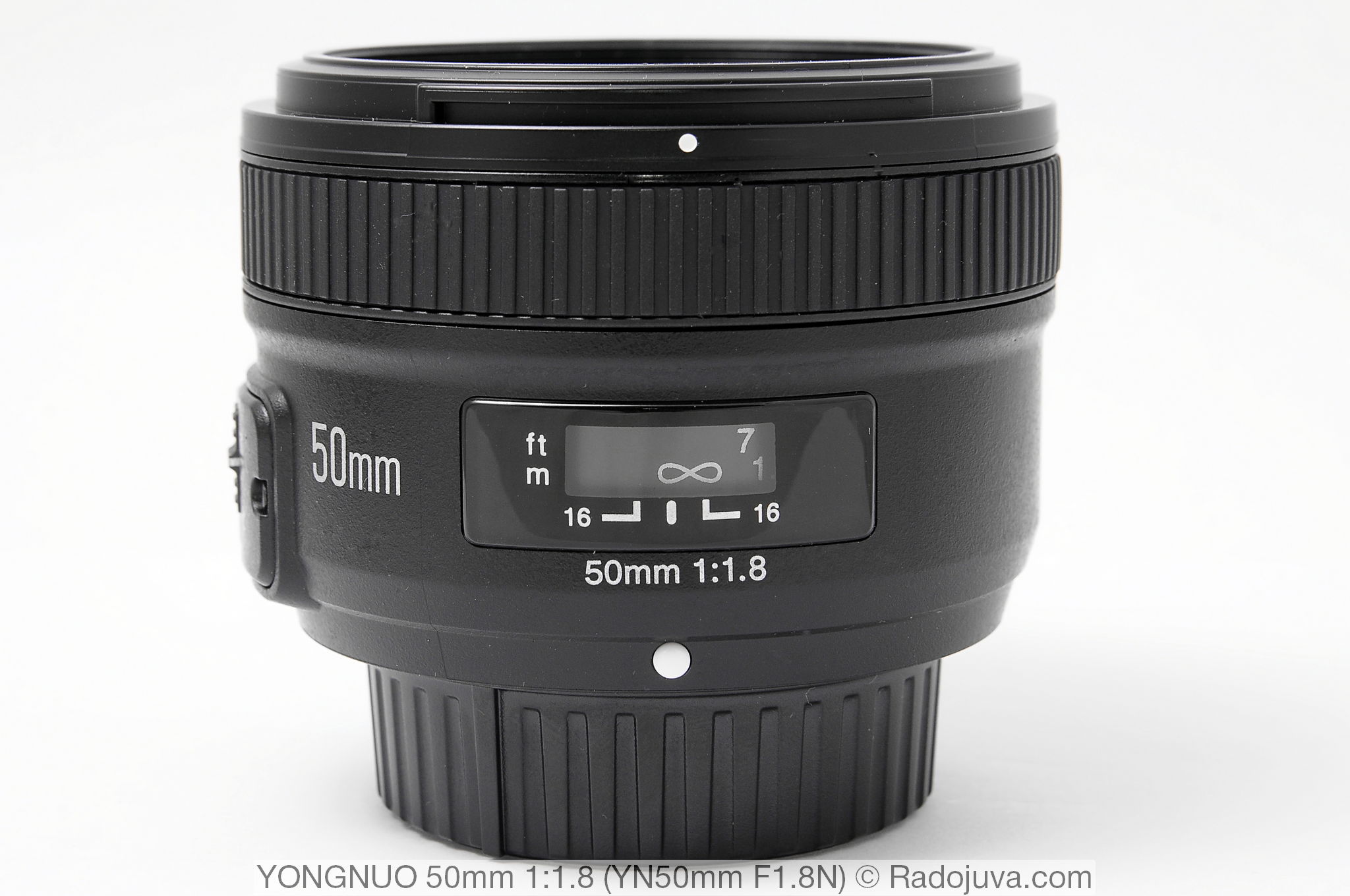
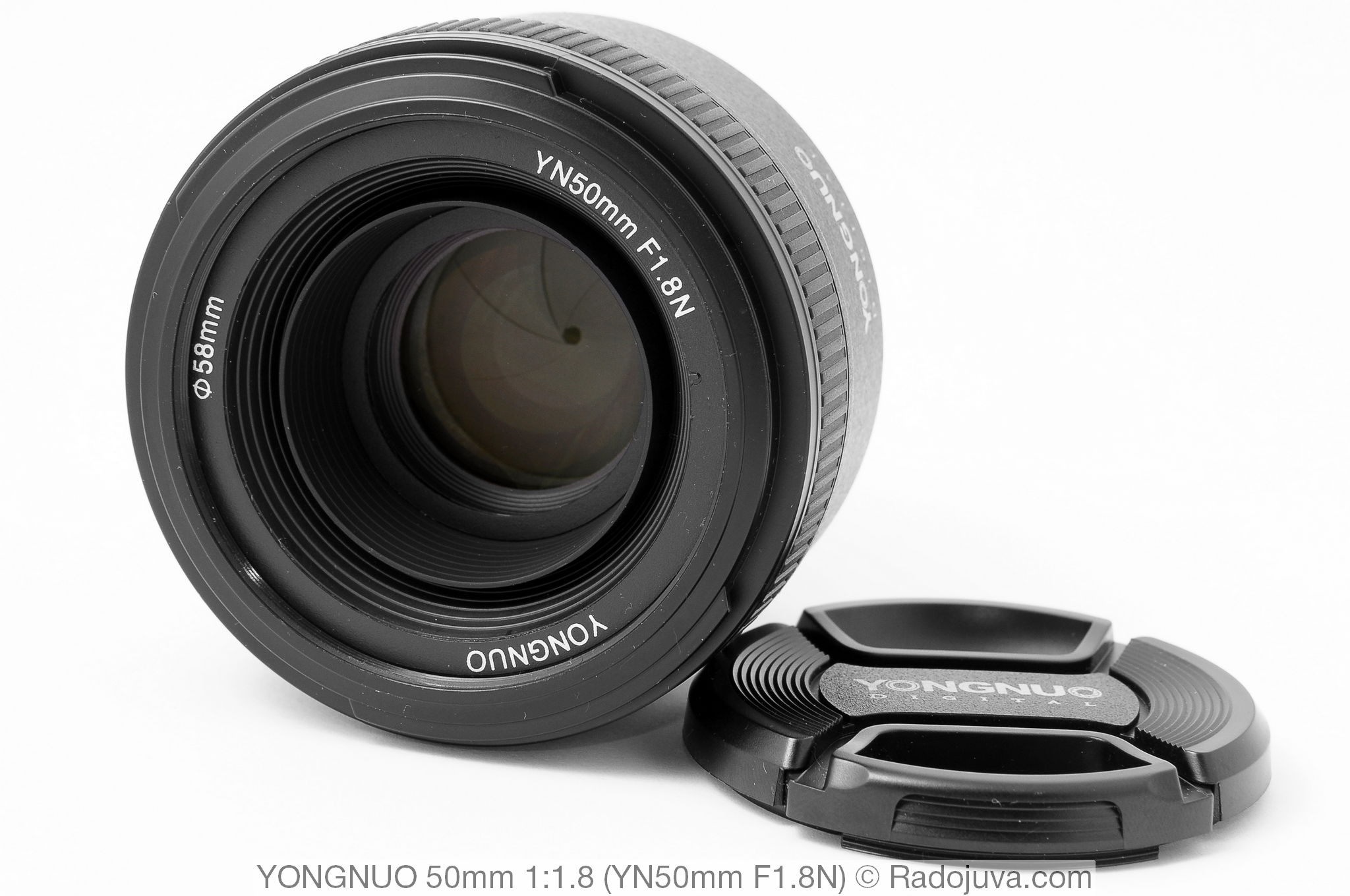
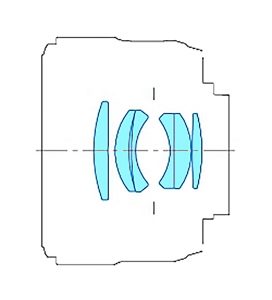
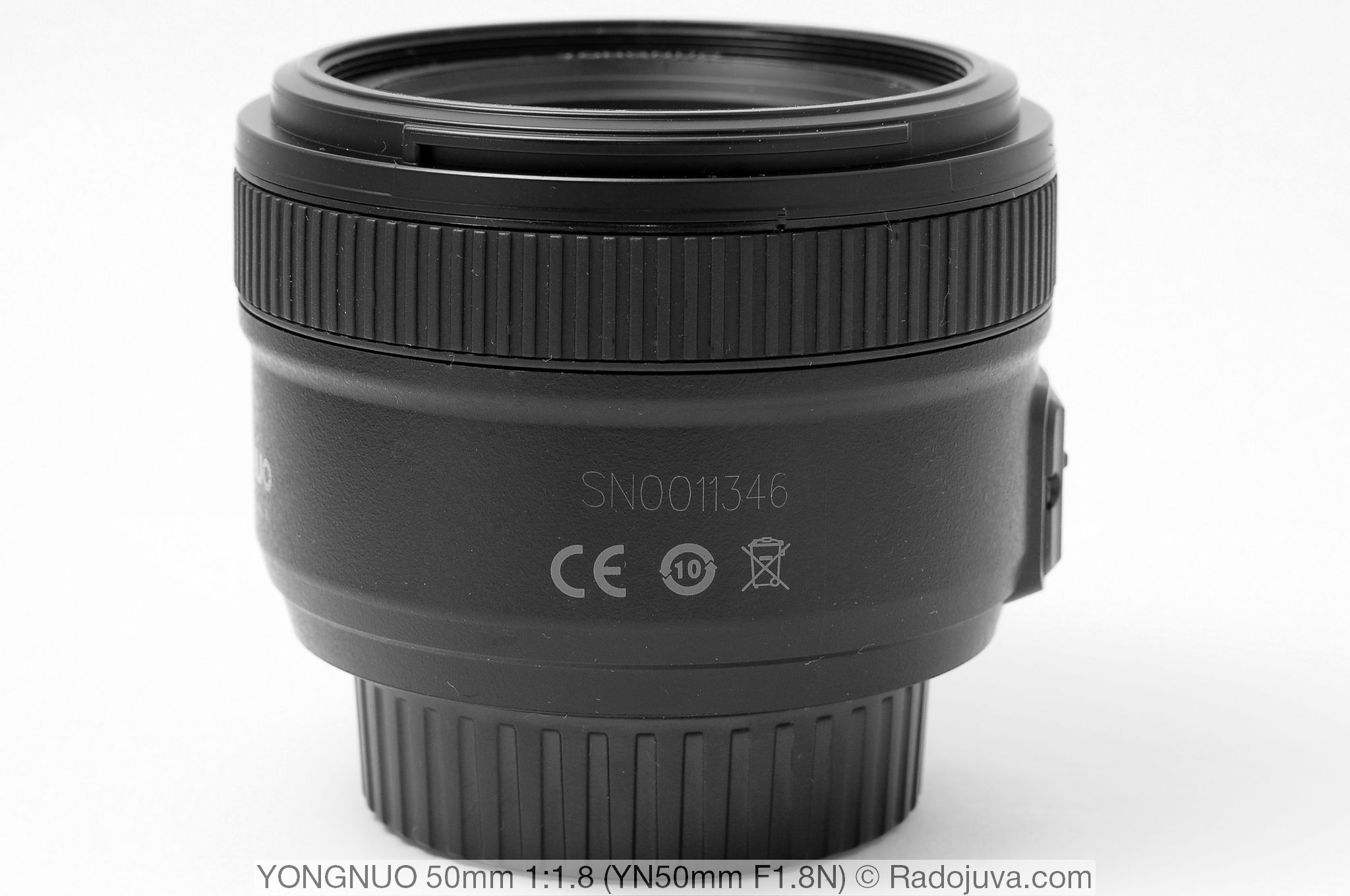
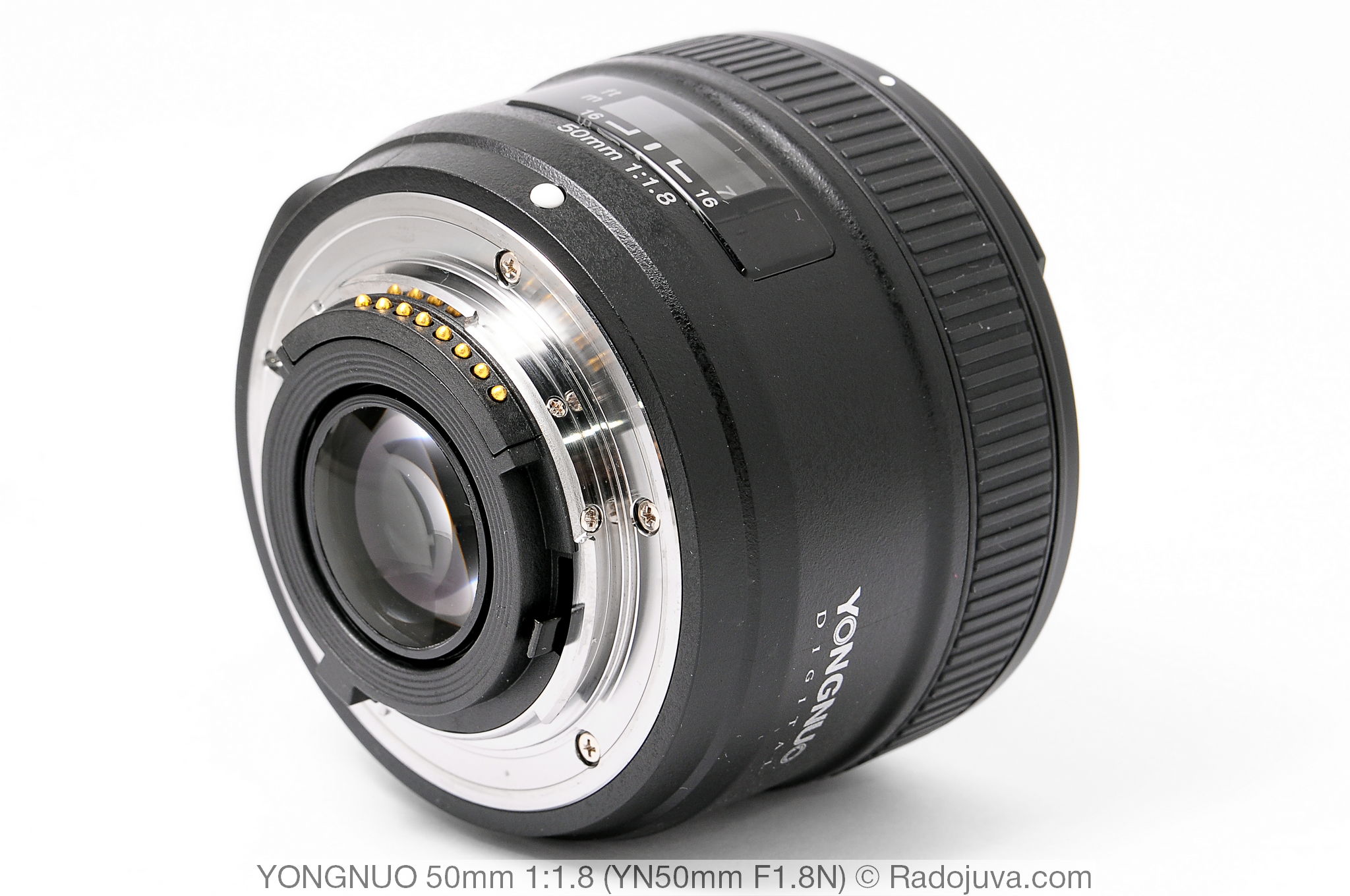
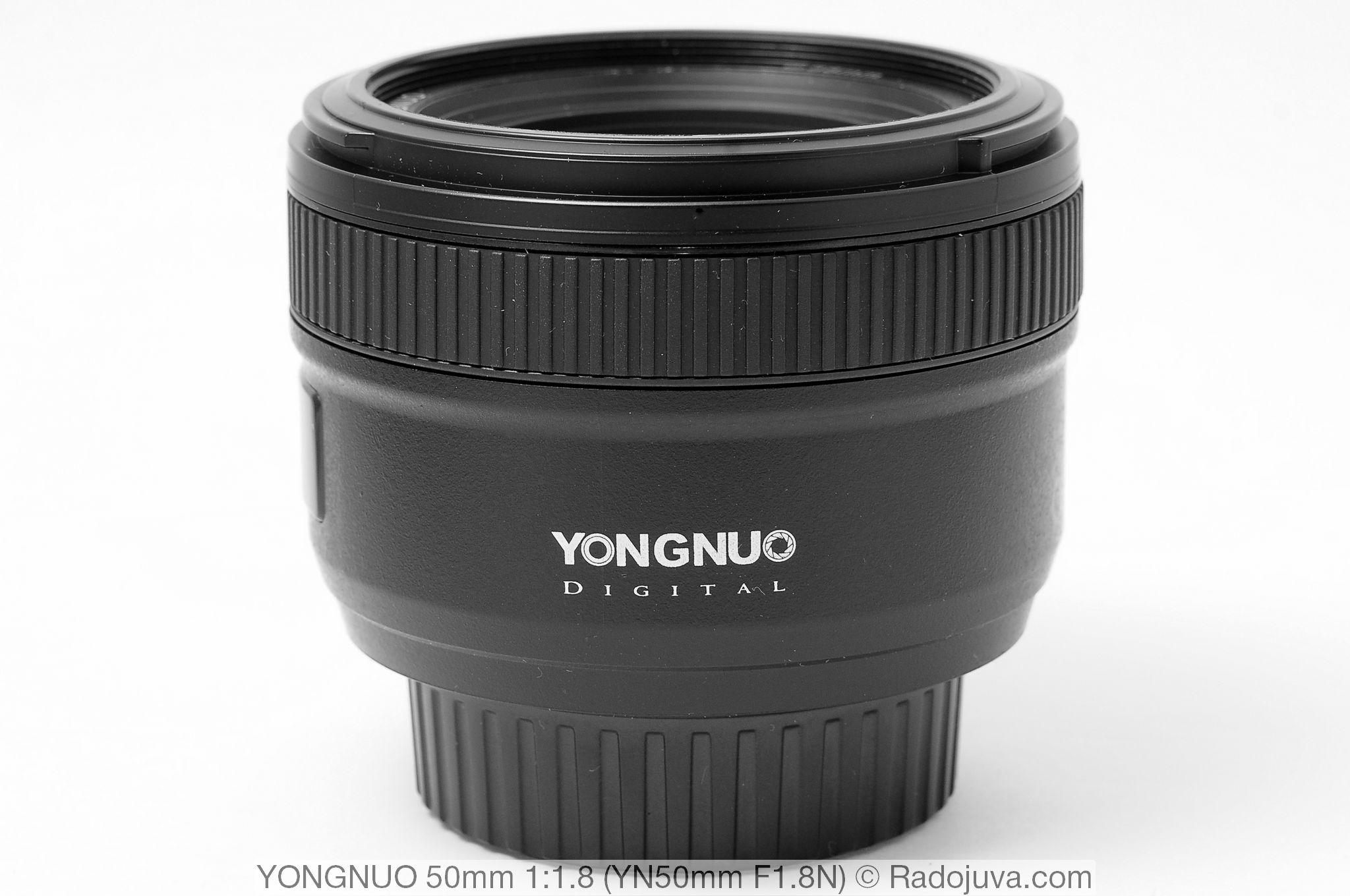











































































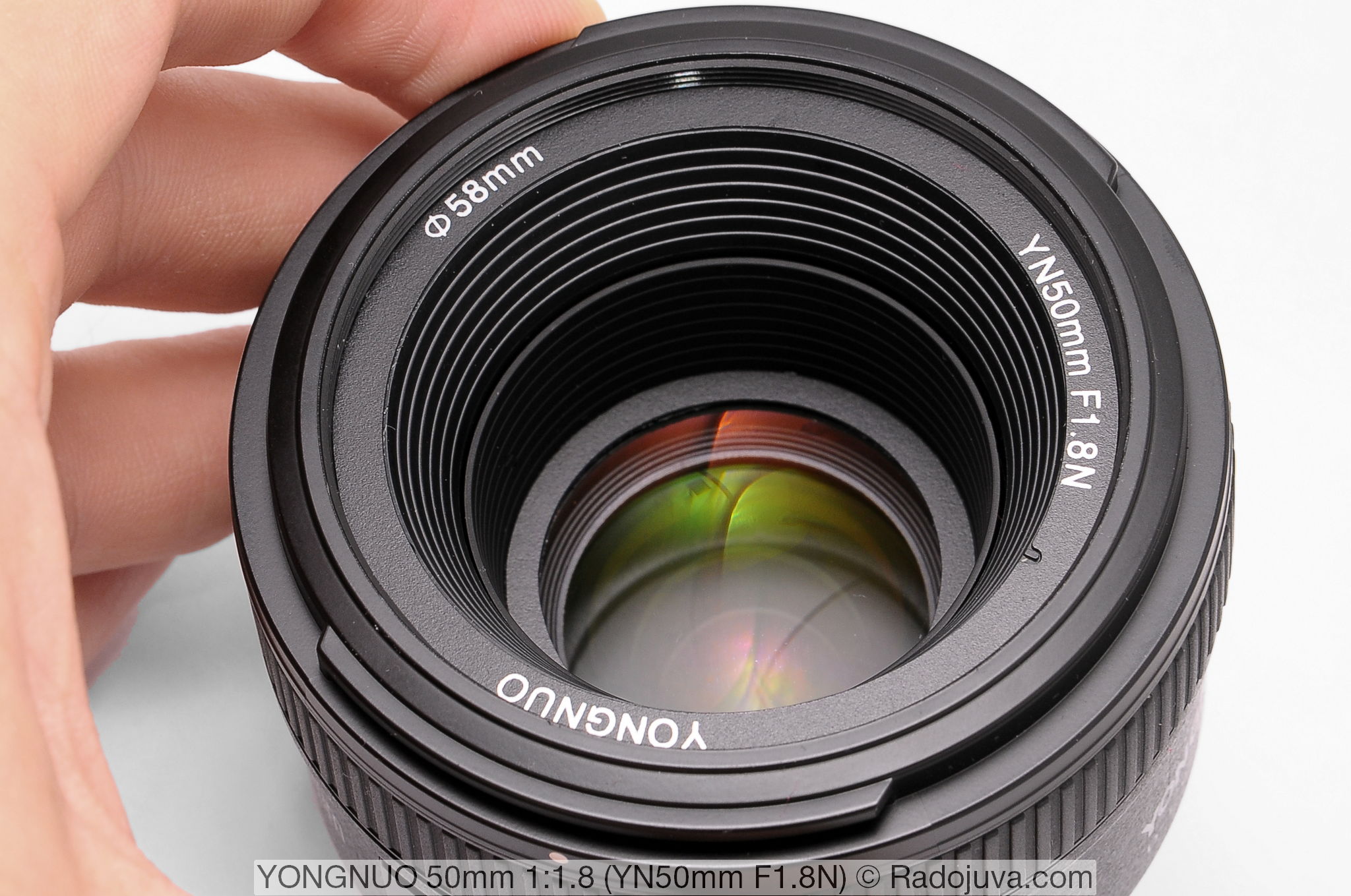
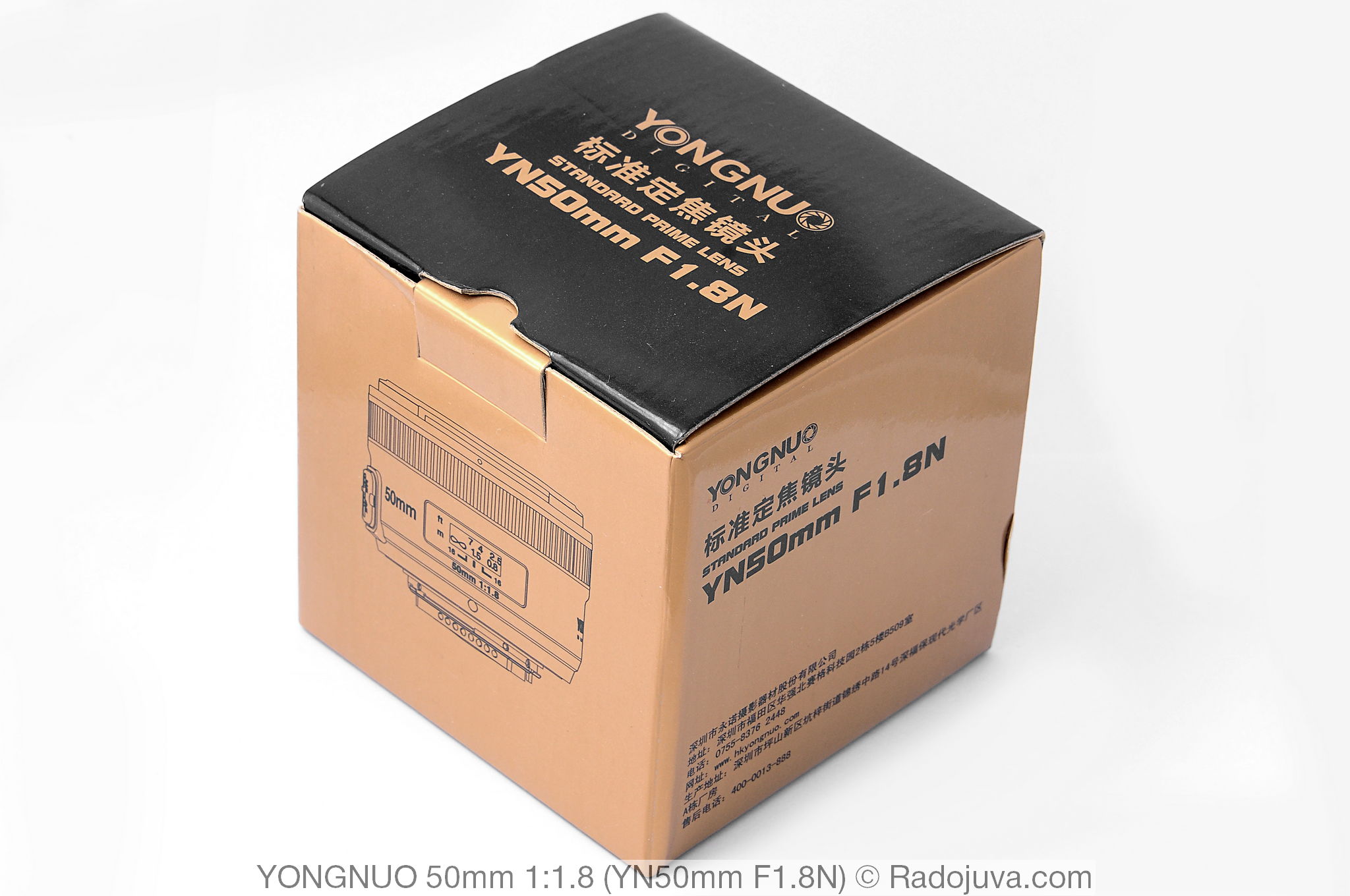
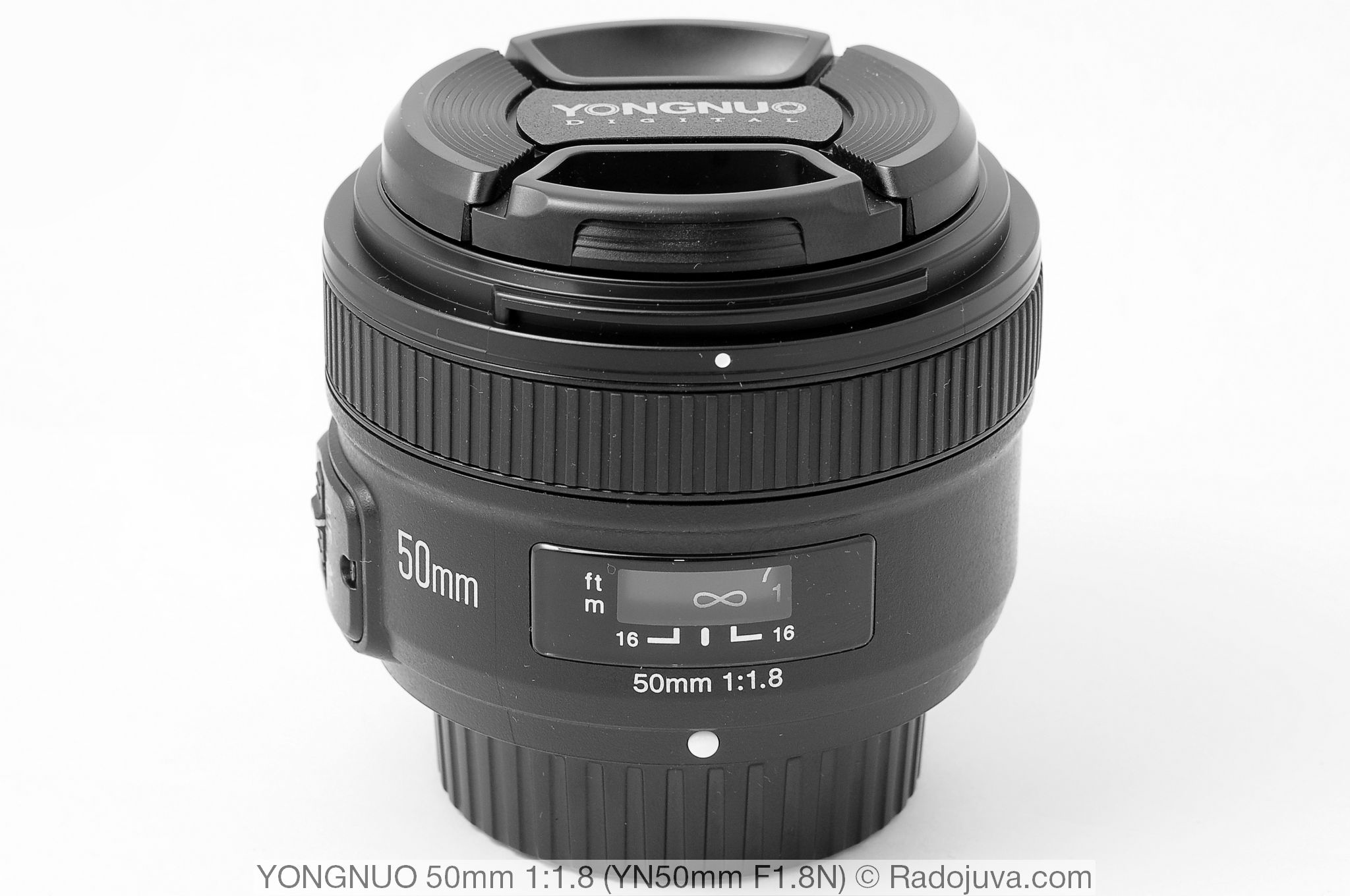

very good overview, Ark. thanks for the video review ... First
Of course, we all know perfectly well that the lens is made in China, but still the lack of information on the product itself only adds to the alarm. —- it is made in Chinese China, under China !!!
Thanks for your review! Just questions - is the YN50mm F1.8N inferior to Nikon 50 / 1.8G in image quality? And if you already have a Nikon 50 / 1.8D, is it worth changing to the YN50mm F1.8N?
Photo examples cannot be downloaded - the file was not found.
1. Yields 50 1.8G
2. If there is 50 1.8D then do not change
3. Sources Fixed.
funny.
but in Russian conditions it is still better to take a poyuzanny 50 / 1,8G
Even poyuzanny 50 1.8zh will be more expensive than the new Chinese :)
I say “better” and not “cheaper”.
Arkady, the scheme solves) Hands and experience) Photos are great)!
Thank you, Arkady. I liked both the review and the video review - they are very detailed, it's just nice to read, watch photos and listen. The lens is optically not bad, but time will tell how long it will live and work normally. In the video review, the phrase turned out to be interesting, that on a whale lens, 50 mm would have to close the diaphragm to 5.6, rather, it would have to be opened to 5.6 :)
as soon as the Chinese learn to make a diaphragm, it will certainly cost more than Nikon
And what is wrong with the diaphragm? I was planning to take 35/2 (((
Yes, I was joking :) just when the quality is equal, the price is equal
but about the diaphragm I read with Arkady in this article
but for the sake of interest, why not buy, if there are 6 sput ...
So I think so. the new 35 \ 2 per canon costs about 6 thousand rubles !!!
But I have a crop and still works with an old Sigma 30 \ 1,4.
On aliexpress some kind of mega-discount 11.11.2016
there is no mega discount. Without a discount, the best price is 6000 with a discount of 5300. IMHO it's better to wait until Sigma falls apart and then take something. And if Tokina 535 falls apart, then in general everything is decided - I'll take a Sony 7))
Very beautiful photos and an interesting review! Thanks Arkady!
Bokeha is certainly terrible, with Nikon poltan much more interesting, but the rounded petals do not allow the nuts to appear even at 3.2, they are already at 2.8 in the original!
What is terrible?
The Chinese learn quickly, remember the first cars on our roads and how they quickly changed for the better, and even now they are not Japanese / Koreans / Germans, but they are already quite good, they have also grown in price, nevertheless they are cheaper than the more famous brothers
Samyang will soon also release autofocus 50 1.4 and some other shirik.
they are unlikely to make a shirik with low distortion. their niche is high-aperture amateur crafts.
why don’t they make a digital camera? any better than tacit recognition
“High-aperture amateur crafts” - pfft, did you hold their 85mm 1.4 in your hands? Shoe 85 1.8 makes a hot water bottle like Tuzik in everything except autofocus
oh shit it was said about Samyang, thought about Yaga. sprinkle ash on my head)
Yaga is five! Now this nickname from Yongnuo will not come off. I would be interested to try a tele-converter from them.
And what does the camera have to do with it. Karl Zeiss does not have his own camera. People just occupied their niche
I agree, Samyang makes good manual lenses.
It would be interesting to look at a comparison of YN35 / f2N and Nikkor 35 / 2D.
Thanks for the review!
That would be now 35-ku 2.0, much more interesting on the FF.
Arkady, with all due respect: is the noise level different for the versions of kenon and Nikon? In decibels, how much is different? I insist that the same motors in the same plastic are equally noisy, except that because of the varying degrees of looseness of the case, you will find differences. In general, it offends me that the insidious Nikonists in everything want the best to snatch. Enlightenment again, say the eye is different! And what may I ask?
In decibels, hardly anyone will tell you. The noise level is really different. Perhaps other gears, gears are used in this lens, the motor itself is planted in a more massive body that dampens the noise. I don’t know the exact reason. I know for sure that it makes less noise.
As for enlightenment: the front lens of Yongnuo Lens EF 50mm 1: 1.8 (YN50mm F1.8) during inspection has a completely different shade - purple / lilac (clearly visible in video review), the YN50mm1.8N version has a completely different color (green and red highlights in the light, clearly visible in video review). Replacing enlightenment is common. Here on Radozhiv there are many examples when the enlightenment of the same lens model changed over time (example) Already from his personal guesses, built on personal experience, enlightenment with a green tint is better.
As for resentment for nikon, relax, rejoice this, this и this.
If you still have a grudge, then consider this: the Nikon Yongnuo 50mm 1.8 version costs about 2 times the version price Yongnuo Lens EF 50mm 1: 1.8 (YN50mm F1.8) for Canon EOS.
Twice as much is normal! Need to pay for photos of people with green faces?
But about enlightenment: on my Kenon copy, it seemed to me yellowish-pink ... I'll come home to double-check - unsubscribe.
Maybe for someone the following information will be useful: the color of the front lens enlightenment, and indeed of the lenses in general, weakly correlates with the final color rendering or color shift. Look at Nikon's nanocrystalline monsters - there the front lens is green. This intense enlightenment is often jokingly referred to as “paint”. Internal lenses are usually color-compensated with anti-reflective coatings to even out the color balance. In general, there are a lot of subtleties with enlightenment, because the opinion that green enlightenment creates photographs “with green faces” is deeply amateurish.
Well, about the green skinton Nikon, the holivar has long begun and not by me. And not only amateurs think so? I understand that it’s not in enlightenment, but in matrices, in dd, or something else.
Well, you don’t need to talk specifically about enlightenment, and then move on to the obscure skin of Nikon.
Oh, these holivarschiki. Either Nikon's red skinton or green. It would be better if they filmed more and wrote less. You look and such topics would cease to interest them
The review is good! Waited for him. At the expense of the lens, I’ll say that I’ve already had one since July, I’m happy with everything. the park is like this (Nikon D7000: YN 50mm 1.8; Sigma 17-50mm 2.8; Tamron 70-300 vr) I have money (I work in the mine), but photography is a hobby for me and overpaying the N-th amount, it’s more like a toad strangled. I also bought through Ali for 5 thousand rubles, with a hood and a trunk.
I have 2 months, satisfied, but was without a hood, sorry.
Tell me, please, did your camera lose contact with the lens?
I got it today. I stuck it in the camera and… “F–“, got upset. But then I remembered something that I had read somewhere about this behavior of UN. took a scalpel and cleaned the contacts on the glass. It all worked.
Great review! Feelings after reading the article - as if he himself was holding and testing)))) Arkady, thanks for the work!)))
The review is wonderful. And the model is tough. Unsmiling. It greatly affects the perception of photographs. On this topic. Nikonovsky is better. Don't waste time and money on this Chinese miracle. Twice or three doesn't matter, it's not free. Save up for nikon.
It is clear that the Nikon version Nikon 50 1.8G better. But it can equally well be argued that Sigma 50 / 1.4 ART better than Nikon 50 1.8G and advise saving up for the ART version, or, even worse, for some manual otus 55 / 1,4... For the layman, throw out 80 cu. or throw away $ 200 Is a serious matter. Of course, it will be very disappointing if the Chinese dies in a week.
In my opinion, it is no less than, directly, harsh)) According to sabzh, of the half-wheelers I happily own 1,8g and helik81. But my daughter for classes, perhaps, I’ll buy this ketays. not that everything is completely bad, however, the difference in price has a place to be, but I don’t want to. So it goes.
Arkady, why bother testing a Chinese? It is clear after all in advance that it will be a cheap copy of and, to put it mildly, not an ideal Nikon's fifty. After the “tacit confession”? Why buy an analogue of Deshka in the Geshka case?
1. Focus motor
2. Price (compared to 50 / 1.8G)
3. Optically no worse than D
In general, all the information is in the review.
I will also ask a question - what has to do with Yongnuo "tacit confession“? the company has been on the market for several years.
Arkady, tacit recognition here is very much what. For many years, Yongnuo has been producing housekeepers like very average quality outbreaks. Suddenly, with what re-start, recently no more than two years ago she began to mount lenses. It is clear, after all, that she simply tore the lenses of Nikon and Canon. Maybe, of course, the brawl was better than the company made a silent vocation by arranging the camera for sharp shots, but still. 70 years ago, Nikon began with the same thing. But yongnuo, this path has not yet passed and will not pass soon. Therefore, testing them seems to me prematurely.
Photos in the review say just the opposite, is not it?
But why did Yong go all the way, spend a lot of money on development, when you can stamp the popular lenses tested over the years for which the patent expired?
Typically, a patent is limited to 30 years. Of course, during this time, many lenses become obsolete, but some will still be in demand.
The backlash is small, most users will not even notice it.
The diaphragm mechanism moves if you touch the leash with your hands. During the actual shooting, any negative impact on the exposure or other inconvenience was not found.
But the fact that contacts fell off is still a serious drawback.
In general, given its cost and functionality, this is really good. I am not claiming that this is a “great lens”. It has predictable shoals, but unexpectedly, other niceties.
There most likely the matter is in the lens electronics, she falls asleep or something, because with the same success, you can turn the camera off / on and the lens works again normally, i.e. there is electrical contact, and the filling ceases to communicate with the carcass.
The Chinese watchdog forgot to put (Watchdog timer) :)
Who knows, either they really messed up with logic, or the protocol for communicating with the carcass was not fully studied. In general, not fatal, but unpleasant.
Personally, for almost a year of operation of this lens, contact loss was not observed.
Is it Nikon's version? They seem to have appeared not so long ago ...
Good day.
The review is beautiful.
I liked the lens, despite the Chinese.
I like the ability of Arkady to make candy on a 6 mega pixel 70ke,
which again shows - it's not about megapixels.
Thanks for the review. I myself just received this glass with ali yesterday, while I'm testing. Indeed, there was very little information about him, I ordered, at my own peril and risk, after watching English-language videos on YouTube about problems with autofocus on D5200 carcasses. But mine works fine for me. It focuses really noisy compared to the whale. By the way, it works on autofocus macro rings, it sits tight, even too, contacts do not fall off) I bought at a discount for 69.5 cu from this seller https://goo.gl/DNQPI3 And on 11.11 the price will be about 62.5 USD. plus coupon and cashback will be released at about 55-58 USD. which is already comparable to Yaga (I take into account from your comments) 50 mm for canon. So I hurried a little with the purchase, but in general, I'm satisfied with the first fifty dollars. And then there is a review of the topic, once again I was convinced of the right choice. But, IMHO, for the initial $ 80-85. as it was in the summer I would not take it, but thought about Nikon 50 / 1.8G from ebay for 170 USD ...
Does it make a lot of noise, in terms of grain in the photo (color) during night shooting (I have D3200)
At 3200, it's generally a pipe - he doesn't know about non-native lenses. Have you seen that the coating of the front and back lenses is different in color? The inner lenses are also multi-colored. On normal lenses, the camera adds up these colors and turns out to be white (for the camera). With the same lens, it's just mess! I advise you to immediately take a screwdriver chamber and put your own D - fifty dollars on it.
And who told you that the enlightenment of all the lenses in the lens should be the same color?
The color of enlightenment does not matter for the final result. The lens has a bunch of lenses that cancel each other out. A little higher, I already answered a similar comment.
You did not write about the digital noise, whether it is strong, if not, then I’ll definitely take this lens))) throw off the good people for evening or night shooting or the club will be perfect and you can judge the quality.
Noise is a property of the matrix and the camera and not the lens
Digital noise is not related to the lens.
What kind of digital noise from the lens are we talking about?
Iso lift the whale at night and find out
So the noise from the matrix due to the high ISO, the higher the aperture, the less ISO can be set at the same shutter speed.
This one has quite working 2.2-2.5 in comparison with 5.6 on the whale. But if you close the aperture more strongly, then either increase the shutter speed, or lift the ISO and again there will be noises.
Talking about the noise in the picture from the lens is wrong, to say the least.
What is your camera, show someone at least equal evening shooting
as for digital noise. in the village you can clearly hear how the stab of the 18-55VR works, but in the city it doesn't
Try not to go out with him into the field, generally deaf. :))
Today I ordered it for Ali. With a steep discount. With a hood, a filter, a cover - came out for less than 1800 UAH. I will burn until I wait.
Something I don't like.
The frames are suspiciously gray.
Bokeh is suspiciously nothing like fog.
The clarity is already too portrait, almost telephone.
I once used a manual Zenitar 2 MC - about the same pictures came out, but the bokeh was more pleasant and delicate, and the color was more saturated.
It seems to me that corny glass quality is lame here.
What is clarity? ..